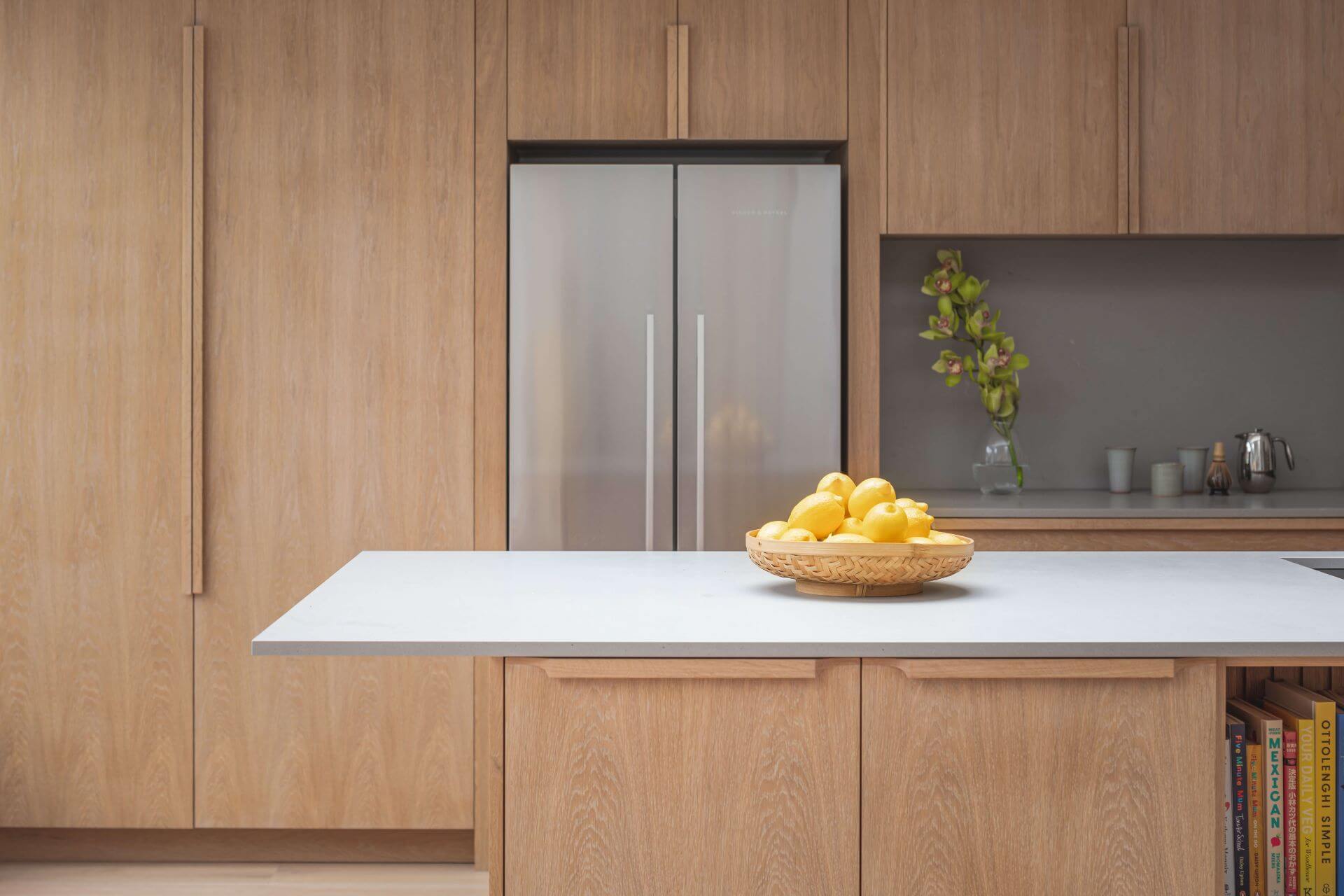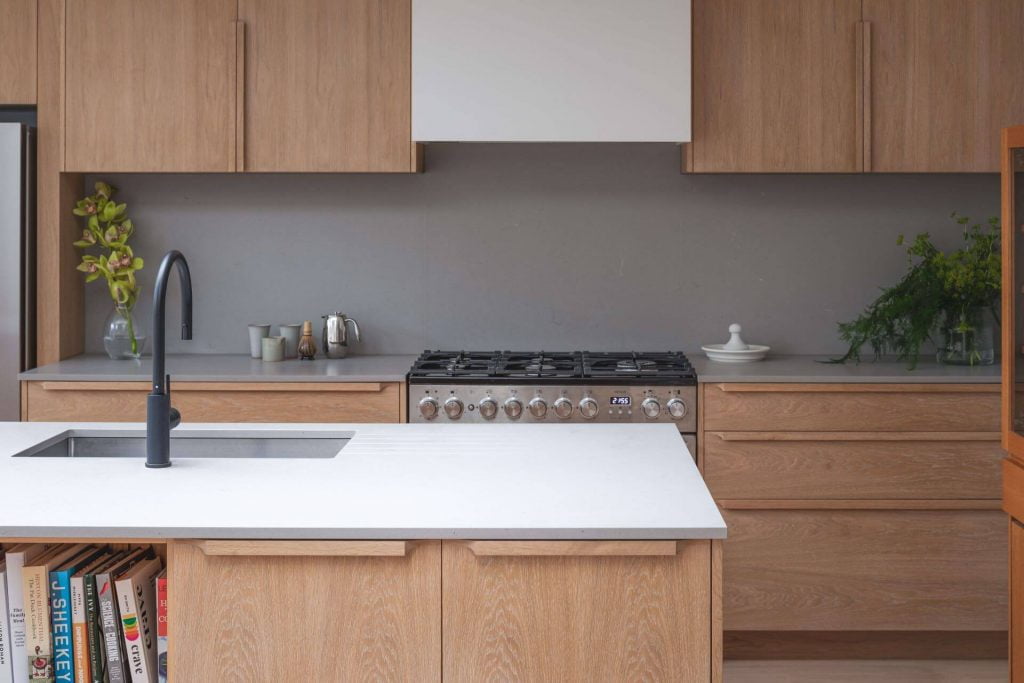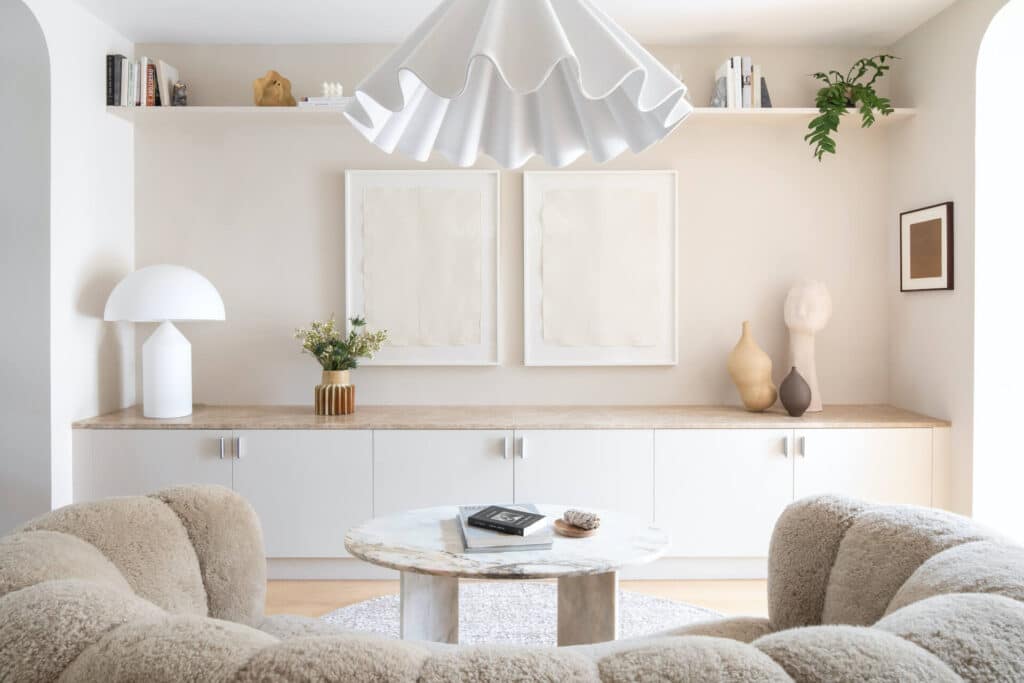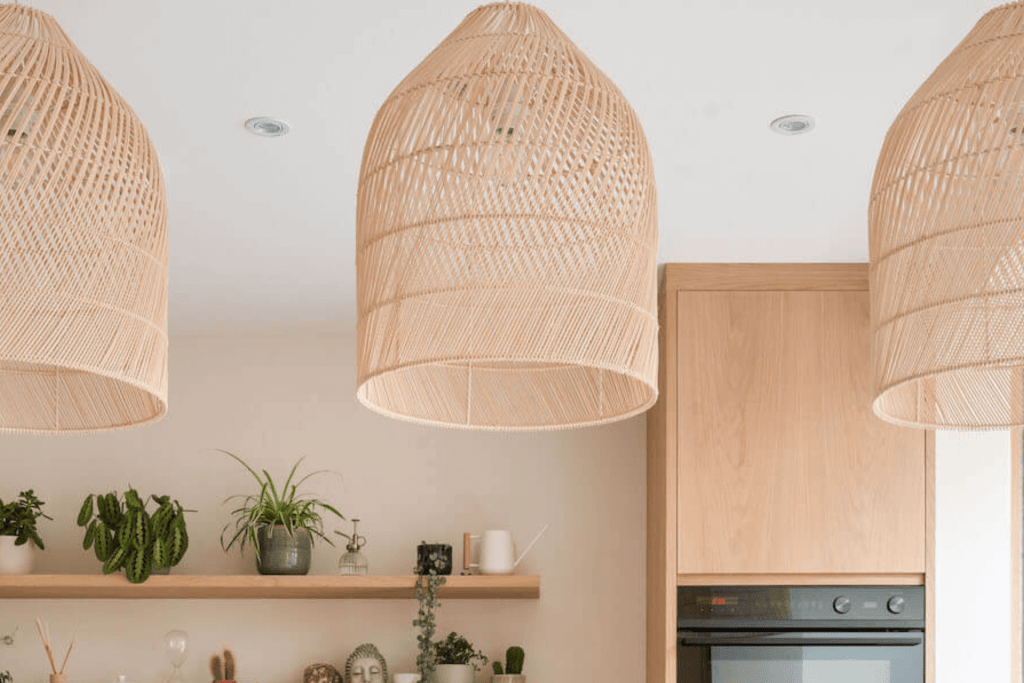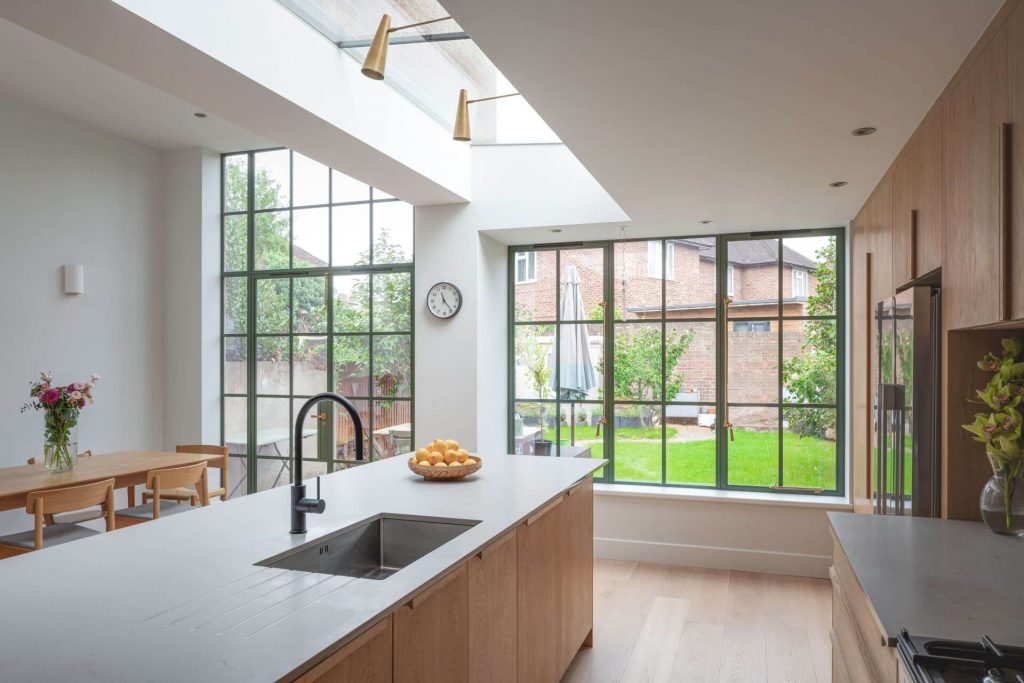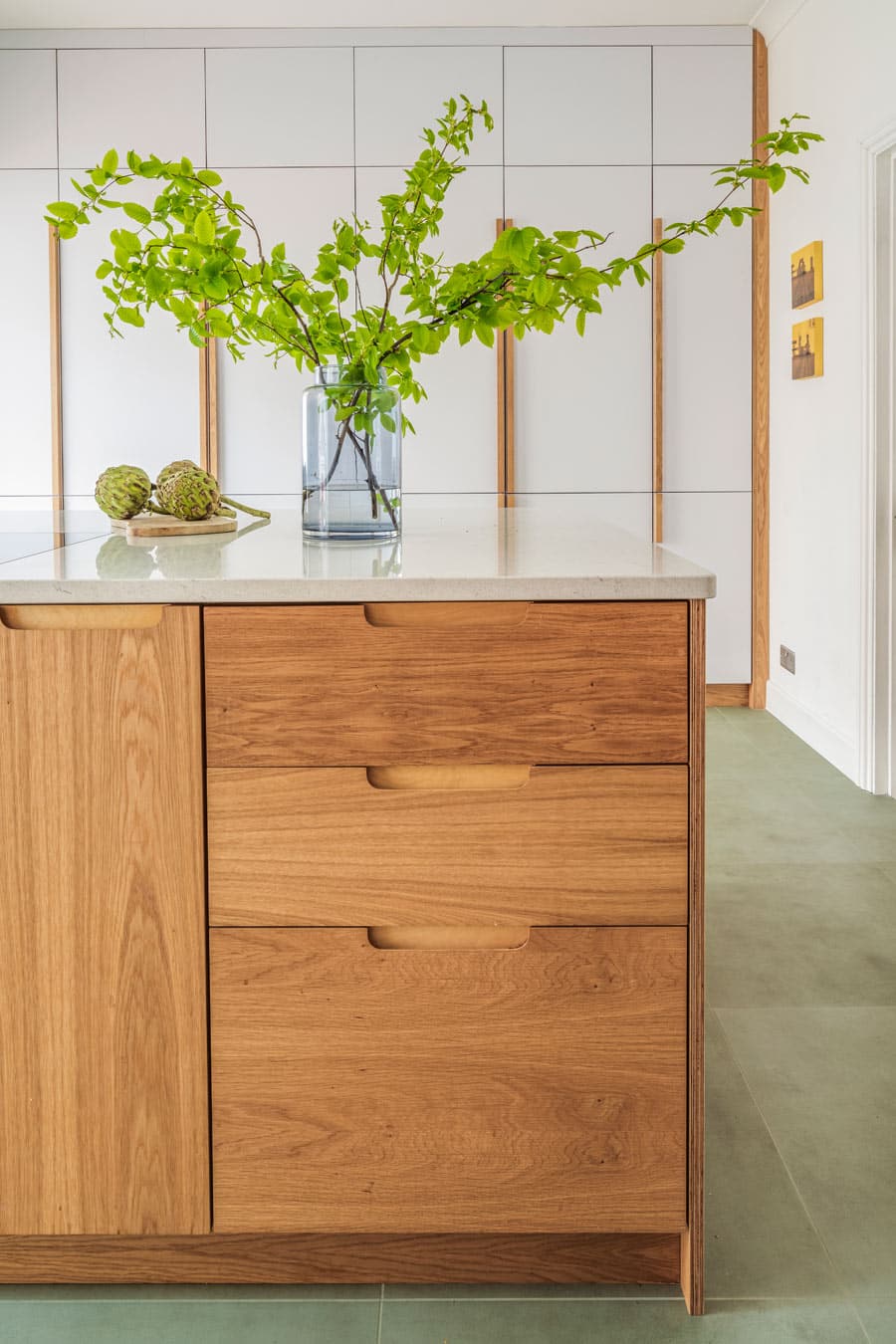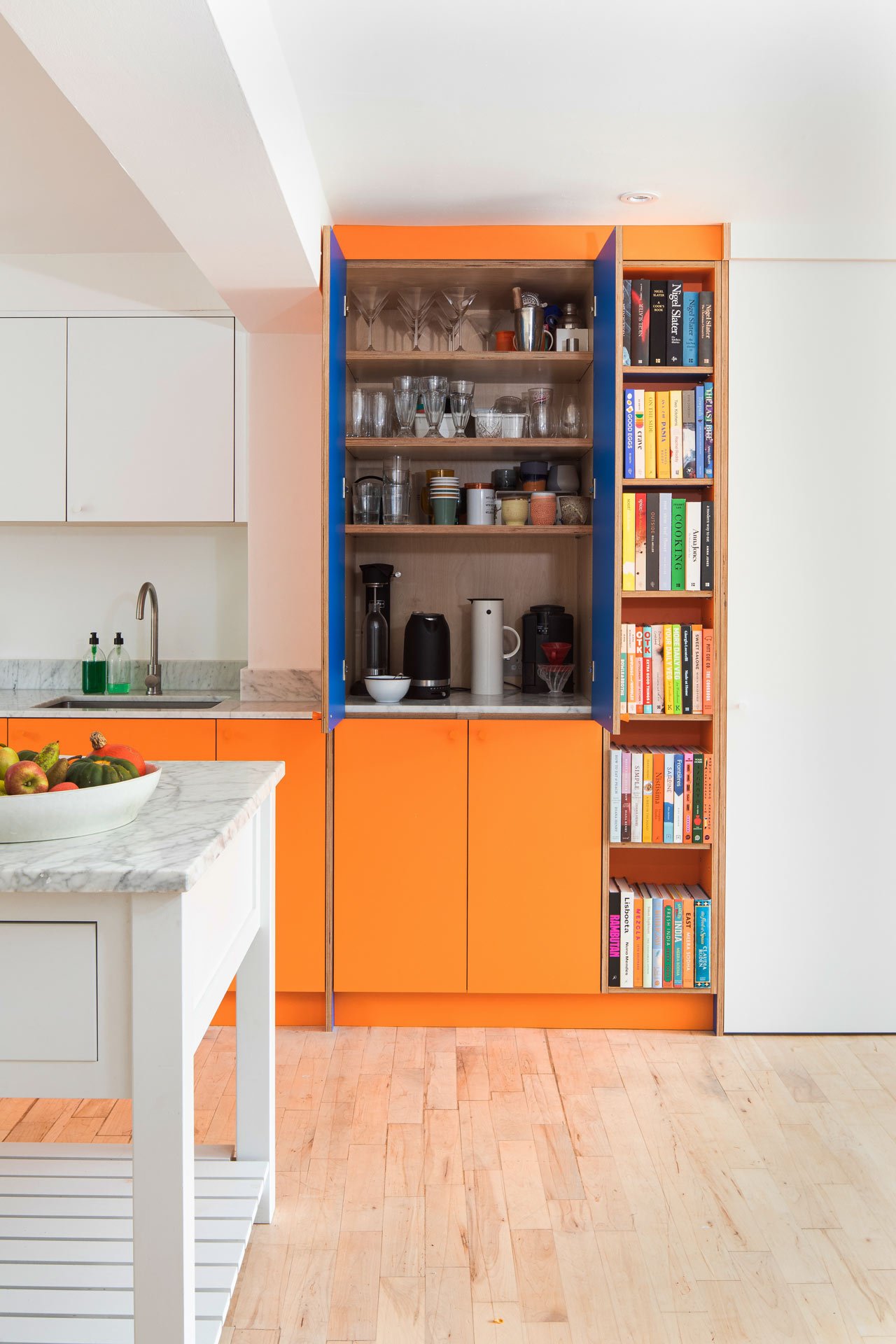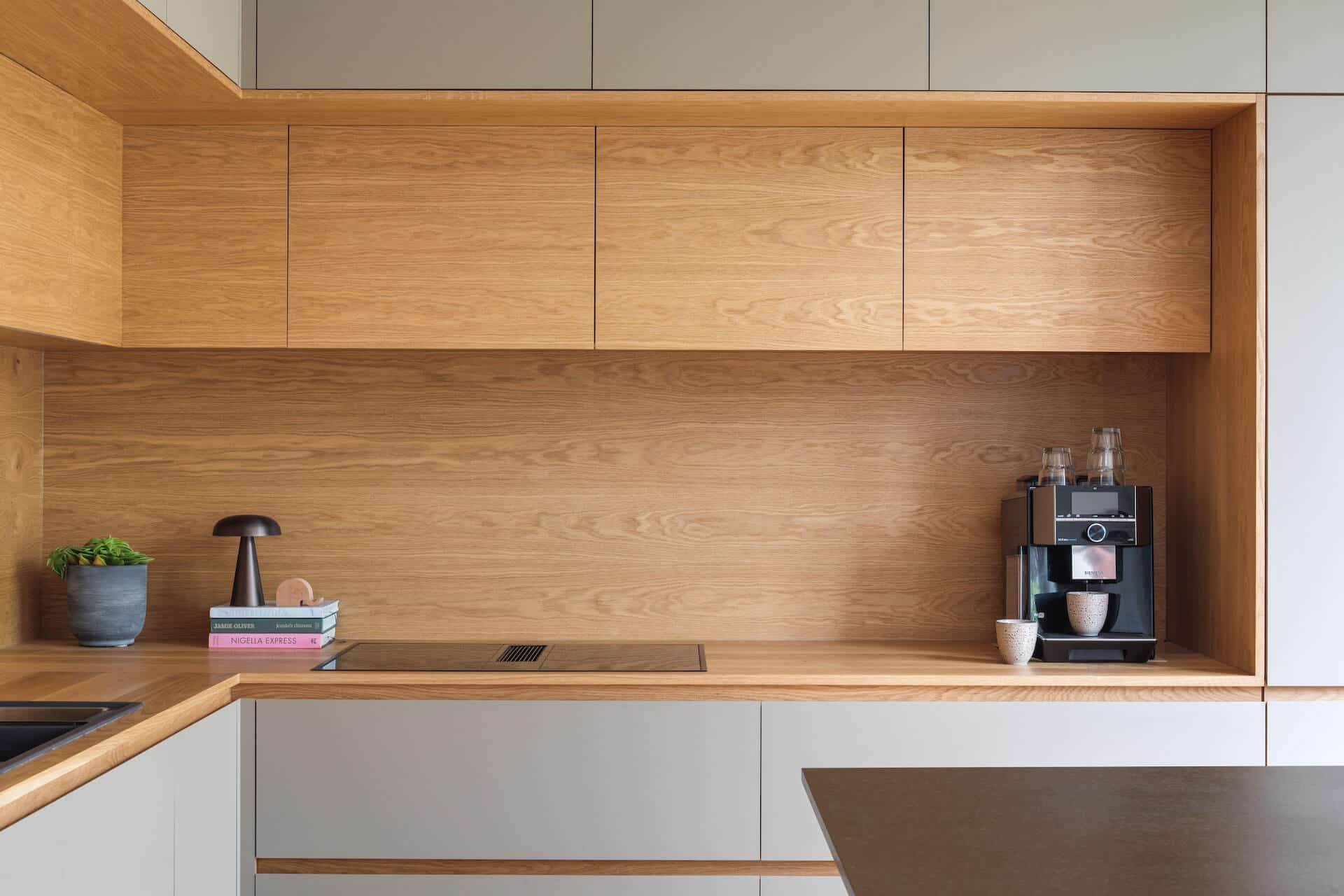A harmonious marriage of two nations’ signature designs, Japandi takes its inspiration from nature, combining minimalism, warmth, and functionality to create a serene and calming space.
As the name implies, Japandi incorporates Japanese and Scandinavian designs to produce a clean yet welcoming space made up of lines, natural materials, and neutral colours.
This hybrid design trend isn’t just focused on style, Japandi centres around sustainability with its main materials being predominantly organic and natural such as high quality oak, bamboo, and cotton. Its innate focus on craftsmanship also opts for fewer higher-quality timeless accessories and furnishes over an excess of mass-produced products.
Japandi’s clean aesthetic and functionality lend itself perfectly to kitchen design. Keep reading to discover how to achieve this style in your home.
How to Achieve Japandi Design in your home
1. Opt for natural materials
Taking from both its Scandinavian and Japanese roots, wood is heavily used throughout in cabinets and floors to create a nature-like space which feels organic and fluid. In Japanese design, Shakkei (which translates to ‘borrowed scenery’) uses natural materials within the home to create a seamless sense of nature, bringing the outside in.
Opting for a clean and light wood finish will keep the space bright as well as add warming tones to your room.
For a Japandi kitchen, worktops made from natural stone pair well with wooden cabinets and can bring additional textures to the room.
2. A sense of simplicity and order
Japandi aesthetic is reinforced by combining Scandi design’s love of minimalism and Japanese design’s philosophical focus on ‘nothingness’ to create an orderly free-flowing space.
Finding the right balance of functionality mixed with quiet and sleek is crucial in creating a calming and serene space
Clean lines are often used throughout cabinetry, surfaces, and furniture to bring a sense of harmony into the room, helping to create Japandi’s signature silhouette.
3. Organic Textures and furnishings
We’ve already mentioned the importance of natural materials in Japandi design, but adding organic textures to the spaces through furnishing and accessories helps to create a homely feel to your room whilst maintaining a natural look.
For our Japandi Kitchen project, we added wooden slats to the inside of our kitchen cabinets to achieve the signature Japanese aesthetics and add some much-needed texture.
Additionally, choosing the right tables, chairs, pottery, and fabrics can help to elevate your space. Choosing wicker or rattan furniture will help to continue the natural materials and add texture. When it comes to textiles, opting for fabrics like muslin or linen will add softness to your room.
Remember, Japandi is all about minimalism and spaciousness, so make sure not to clutter your space with unnecessary furnishing and accessories.
4. Interior Lighting
Interior lighting is your chance to have some fun with your space, whether you opt for a statement lampshade or prefer minimalist lighting there are plenty of options to choose from.
Statement overhead light shades made from bamboo or paper are a great way to incorporate more natural materials, or if you prefer something more subtle, opt for brass or an oxidised metal light shade to complement the existing organic materials.
When it comes to the shape of your lampshade, you might want to opt for a curved shape if your space is already filled with lots of straight angles and squared corners.
5. Neutral colours
Japandi design is all about embracing natural light and allowing it to fill your room. Depending on your space, you may be limited to natural lighting so choosing the right colour scheme will help to enhance the light and keep your room bright and airy.
A neutral colour scheme is essential to capturing Japandi’s signature look. Crisp whites, soft browns, delicate beige, and muted greens, pinks, and yellows are all popular choices.
Adding accents of black or deep brown, purple, or green throughout the room helps to add contrast.
Don’t forget to add plenty of house plants to continue the theme of nature and add a pop of colour.
